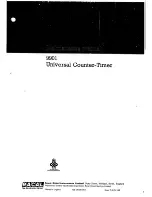
SPS-500 Program Manual v1.31
S Mode Programming
41
Memory Allocation
CAUTION: The procedures described in this area are security sensitive. Memory is automatically cleared
after memory allocation is set. Do not change memory allocation after your system has been installed unless
you are aware that all programs, totals and counters will be cleared. Do not share this information with
unauthorized users and provide the
S
Mode password only to those you may want to perform these functions.
The Memory allocation is requested when the machine is program reset and default memory allocation is
declined. The information can be displayed at any time by selecting
S
mode option memory allocation.
►
From the
S
mode MAIN MENU touch MEMORY ALLOCATION to display the
S
mode MEMORY
ALLOCATION Screen.
Options are organized under seven tabs. Maximums of memory allocation variables depend upon how each
memory option is set. Available memory is monitored at the top of the screen. An error message displays
immediately if you attempt to allocate features that require more memory than is available.
Memory Allocation – Definitions
The following entries define the file sizes for the ECR; once they have been entered they are fixed and cannot
be changed without program resetting the machine. All ECRs within an IRC (inter register communications)
system should have identical memory allocations.
(1) # OF PLU
This is the maximum number of PLUs (Price Look-Ups).
(2) # OF PLU STATUS GROUPS
This is the maximum number of Status Groups. These are used to program common system flags to a
group of PLUs and are required by the system.
(3) # OF PRICE LEVEL PER PLU (1 - 5)
This is the number of price levels per PLU. Each product has the ability to use five prices selected from
twenty price bands. If you wish to use price levels, you must determine the number of price levels here.
If Price levels are set, they are set for all PLUs.
(4) PLU REPORT BY PRICE LEVEL
If selected, the PLU report will detail sales at each level, rather than a total and counter for sales at all
levels combined.
(5) # OF EMPLOYEES
Determine the total number of employees and set the maximum use wish to use here. Employees include
all who use the register for any purpose, including those using only the time clock feature for clocking
in/out.
(6) # OF TIME ENTRIES PER EMPLOYEE
Determine the total number of employees and set the maximum use wish to use here. Employees include
all who use the register for any purpose, including those using only the time clock feature for clocking
in/out.
















































